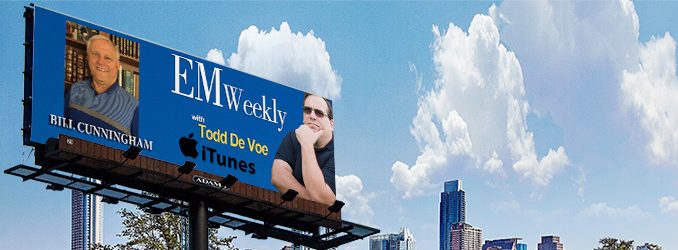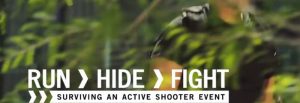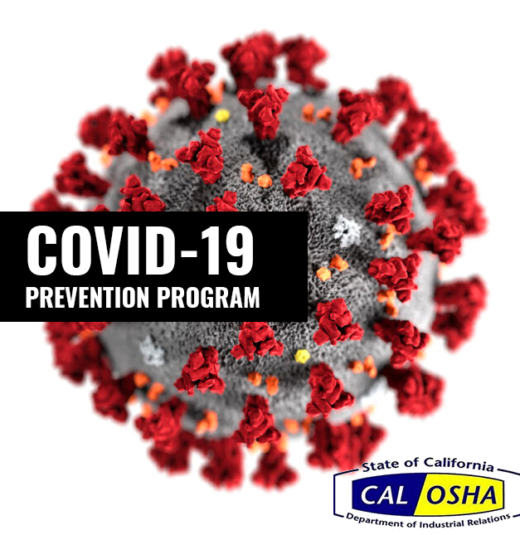[The following is a transcript from an interview on EM Weekly with Todd DeVoe with Bill Cunningham on September 7, 2017. You can also listen to the interview below]
NOTE: The first 17-minutes are a breaking news story. Our Anguilla/St. Marten BERT team are begin directly affected.
Hi! Welcome to EM Weekly, this is your host, Todd DeVoe. Today, we have Bill Cunningham, and we’re going to be talking about BERT, and the business recovery team here. Bill, tell me a little bit about yourself and how you got involved with BERT, and what exactly BERT is?
[BILL CUNNINGHAM] Well, thanks, much appreciated, Todd. I appreciate being here. You know, I’m a Midwestern guy. I grew up in Tornado Alley in Kansas, and there were, obviously, by its name, tornados. One night I remember being in the backyard with my dad, I was probably 12 or 14 years old, and we counted six tornados around us, up in the sky; you could see them trailing, and coming up and down. And, you realize the helplessness of that kind of situation.
There was a town just south of where we lived that was literally wiped off the map by a tornado back in the late 60’s. They came up with a system, a telephone system – it was rather unique for that time — that was, each town or city had their own phone company. They would send out a respond broken signal. In other words, your phone would just start ringing without the typical break we hear periodically. That was a signal that meant: get to safety now. That usually meant getting to an inside part of the house, get to your roof cellar, get to the basement, get to it now! And it actually was very effective. So, I kind of grew up in that kind of world.
Went from there… you know, I was in the Coast Guard, kind of like, yeah, let’s help people, you know, help people in emergency situations. I was on several calls, I was in San Diego through the Air Station, I was a tall-ship ship sailor for some time, which is kind of a fun thing, on the side.
[TODD DEVOE] Cool.
[BILL CUNNINGHAM] It was kind of in my blood, to be helping people in a large-scale emergency. I just wanted to be that person. Didn’t really have an interest, per say, in firefighting or police work or anything like that, but just kind of wanted to be the regular guy that was helping.
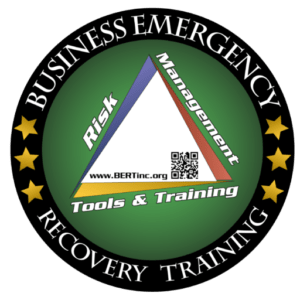 So, that’s kind of how I got started. I had a good buddy of mine, about maybe 10 years ago, a real good friend of mine, who suggested that I volunteered in Homeland Security here. And I did! I took it up, and the job I had was coordinating businesses in the event of a large-scale emergency. And what they were thinking was — this was around 2005, 2006. It was a whole lot closer to 2001, to 9/11, than we are today. Everyone was still hyper focused. So, they identified about 50 businesses in that area, and said: what could you do to help our community? And so, I started meeting with these people. I started gathering businesses together, we started having meetings, we started having group meetings, and we started saying: ok, what can we do? What’s out there? What’s available to us? And we didn’t find much available. There’s a lot of resources for cities, municipalities, small, large; there are a lot of things for mega companies, that have insurance companies that put in their own emergency teams inside the business. But just for the regular-type businesses, there’s just not. So, we said: we’ve got to do something for us. We started just jelling around the idea of: what do we do? So, that’s kind of how I got started.
So, that’s kind of how I got started. I had a good buddy of mine, about maybe 10 years ago, a real good friend of mine, who suggested that I volunteered in Homeland Security here. And I did! I took it up, and the job I had was coordinating businesses in the event of a large-scale emergency. And what they were thinking was — this was around 2005, 2006. It was a whole lot closer to 2001, to 9/11, than we are today. Everyone was still hyper focused. So, they identified about 50 businesses in that area, and said: what could you do to help our community? And so, I started meeting with these people. I started gathering businesses together, we started having meetings, we started having group meetings, and we started saying: ok, what can we do? What’s out there? What’s available to us? And we didn’t find much available. There’s a lot of resources for cities, municipalities, small, large; there are a lot of things for mega companies, that have insurance companies that put in their own emergency teams inside the business. But just for the regular-type businesses, there’s just not. So, we said: we’ve got to do something for us. We started just jelling around the idea of: what do we do? So, that’s kind of how I got started.
[TODD DEVOE] So, Bill, what exactly does BERT stand for again?
[BILL CUNNINGHAM] BERT is Business Emergency Recovery Training.
[TODD DEVOE] Ok. How does your program work, and how did you get involved in that?
[BILL CUNNINGHAM] Well, what we did, when we weren’t able to find anything, is that we were able to get a hold of CERT, which, we all know is Community Emergency Response Team. Maybe we don’t all know that, but in the emergency world is a pretty common acronym. We went through that program, and then decided that CERT is… I mean, it’s a great acronym, it’s a great program, it really does powerful work inside the community, it makes people that go through it really understand how they can support first responders. That didn’t quite meet our business need, though. So, we came up with BERT. And the way we work, we started doing something similar to CERT, which was a live training program. It was similar in the hours, but we would just take business people and tweak it.
I’ll give you an example. CERT will spend a fair amount of time, rightfully so, explaining the placard you’ll see on the outside of buildings or trucks. You know, what the different letters and numbers mean. And we realized that since these business people we had to pair this time down. We can’t let people go for 30 hours off-site. So, what are the different places that we can pair it down? So, we would just ask the question of our first responder staff: is there any situation in that where you see one of those, and it’s safe to go near? And the answer was: no. So, we paired it down, and said: ok, if you see one of those, your job is to keep people away from it. Doesn’t matter what numbers they are, or letters, or colors, or anything. Just get away from it, and keep everybody around away from it. So, that’s how it kind of took for there.
So then, we took that CERT course and then just narrowed it, and narrowed it, and narrowed it, and made it very focused on business, and how do you take this inside your business, rather than individual learning information. How do you take the information and actually apply it inside your business? How do you build your own ICS team? How do you set up an inside commander ahead of time? That’s not the ICS system, pure. The pure ICS system is the first person on scene becomes the instant commander, etc. Well, we can build it ahead of time, and build some redundancies, because you’re going to be a close group of people, you can deal with it. So, build your teams! Take your safety team, build it together, so that your people know what to do, they can actually shift gears from the normal work day. And after having gone through the training, they can shift gears and be able to manage any kind of situation.
And so, it’s about a 6-hour program, online and live. (We do the hybrid program, or we’ll do some teaching by BERT professionals and first 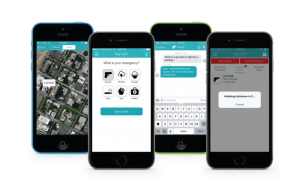 responders.) We’ll teach some of the key elements. But then, we will have people do… take testing and do courses on their own between. We integrate… which is pretty important; we integrated an app that actually helps to manage a situation. So that you get instant involvement. the ICS system, as we all know, is key and predicated upon taking good notes, knowing who is where. The app actually integrates all of that to it.
responders.) We’ll teach some of the key elements. But then, we will have people do… take testing and do courses on their own between. We integrate… which is pretty important; we integrated an app that actually helps to manage a situation. So that you get instant involvement. the ICS system, as we all know, is key and predicated upon taking good notes, knowing who is where. The app actually integrates all of that to it.
We have the similar modules to CERT, we have the ICS system, and so, there’s a whole module describing what the ICS system is, so that people can understand it. If they had to work with first responders, they would at least be able to know the vernacular.
We teach people how to download the app. The next module is emergency planning. So, how do you actually start to build your business, an emergency plan around your business? And then, through the Titan app, we’ll start sending and receiving broadcasts. How do you broadcast out to your people so you can instantly communicate with everyone that’s out there, if there’s something big that happened?
There’s a medical triage portion. We have emergency documents inside the app, which you can see how to do CPR, how to do first aid. You can access instantly, in this one place, all of those different aspects. There’s a fire safety module, so then, if someone needs to send an alert, we’ll teach it from the fire stage. You can send also through the app. “I need to send an alert. I’ve got an issue with a medical emergency, or there’s a fire here.” By hitting one button on the app, it triggers — there’s no tracking, beforehand — but it triggers… tells your managers exactly where you’re standing and what your emergency is. So, just by hitting the one button, managers can deal with the situation and help can be coming to you with nothing more than just hitting the single button. We have…
[TODD DEVOE] Well, that’s a pretty powerful tool right there.
[BILL CUNNINGHAM] It’s an amazing tool! And what it does, further than that, is that once you’ve got people that are trained, so they understand how to use the information and how to use these tools. If, for instance, there is an injury at a machine, where somebody has collapsed; you can send the alert to your managers — they can be in Georgia. They can just respond to you, know exactly where you are. The team member can open a video, and they can see exactly where you are, what’s going on, what’s happening real-time, right now, and be advising you exactly how to handle things. And it’s amazingly powerful. So, you’re now getting… you’re having resources instantly. If CPR hasn’t started within minutes, there’s virtually no chance of someone surviving. And so, if you’re having to run off, to find, get help, and come back, all that time is wasted. You’re immediately able to go to work and people with resources can start coming to you.
[TODD DEVOE] How big can you scale this thing?
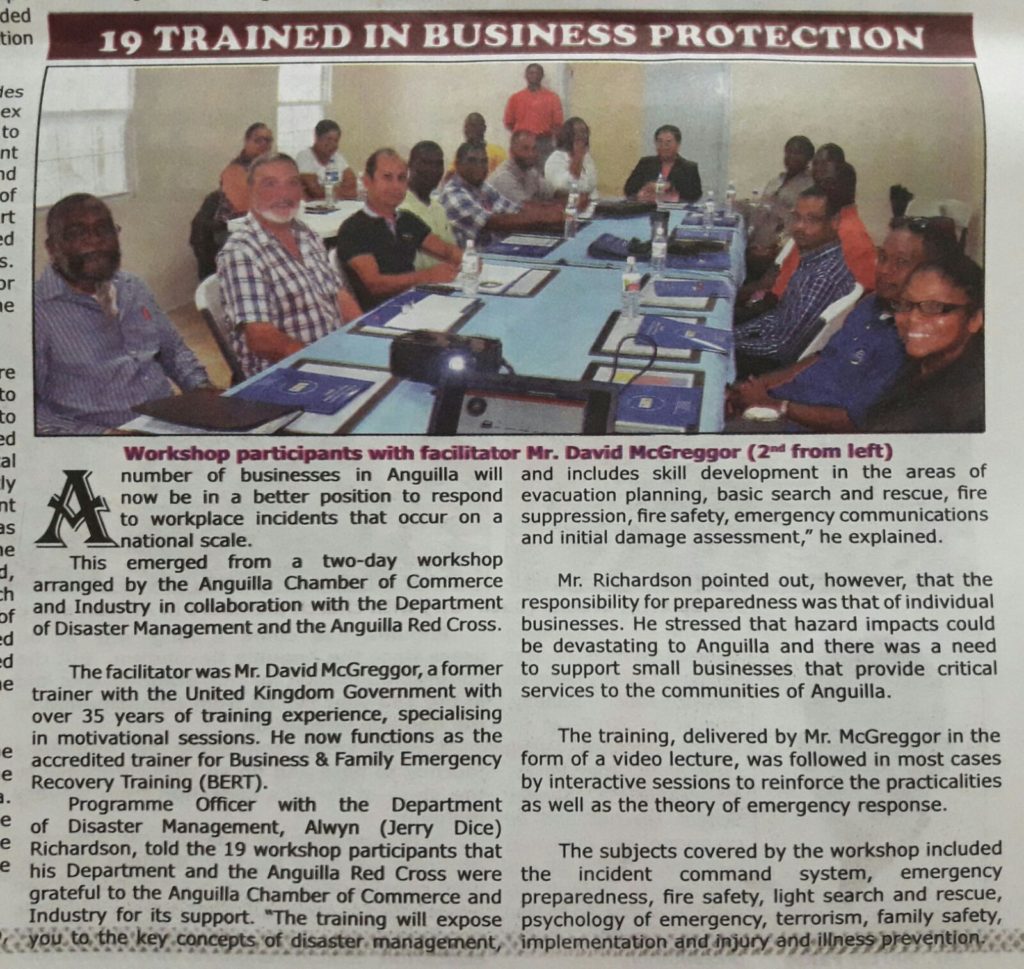 [BILL CUNNINGHAM] There’s no limit to it. As a matter of fact, we are right now, as a matter of fact, the next week, we are training… started the training in the island of Anguilla, in the British Virgin Islands.
[BILL CUNNINGHAM] There’s no limit to it. As a matter of fact, we are right now, as a matter of fact, the next week, we are training… started the training in the island of Anguilla, in the British Virgin Islands.
[Ed note: As of this writing all communications with the island have been interrupted for over five days. Fortunately, 19 individuals from public and private entities have completed the training and been tested so they presumably have the survival skills that can’t be taken away.]
[TODD DEVOE] Wow!
[BILL CUNNINGHAM] It’s an entire island.
[TODD DEVOE] Wow, that’s great.
[BILL CUNNINGHAM] So, the scalability… yeah! The scalability goes from, you know, if you have two or three people in your operation, to an island. To a city. We’re working on a task force with the Irvine chamber of commerce. With an entire city, with a region. Right now, we’re talking also with volunteer firefighters up in the Northwest. So, the scale is unlimited. And the beauty of it, the beauty of it, is… and those really powerful things that are coming up.
What we’re probably most excited about is, we train all of the Waste Management drivers in Irvine for risk management. All of the waste drivers. They have all become certified. Waste Management have 125 certified emergency managers driving around the city of Irvine, all day, every day. They don’t have the app yet, they’ve been trained a couple of years ago, we’re just now rolling out the app with them.
But bigger than that is if a driver comes across an issue, and he may be Spanish-speaking, he or she can soon actually type in to the app, send the alert, people know where he is, and they could start sending resources. He can actually type in Spanish what the issue is and the receiving device will translate it into whatever language they are.
[TODD DEVOE] Wow, that’s cool right there. Wow! I know that average emergency response calls, our language barrier is a big deal. And something like that would be really…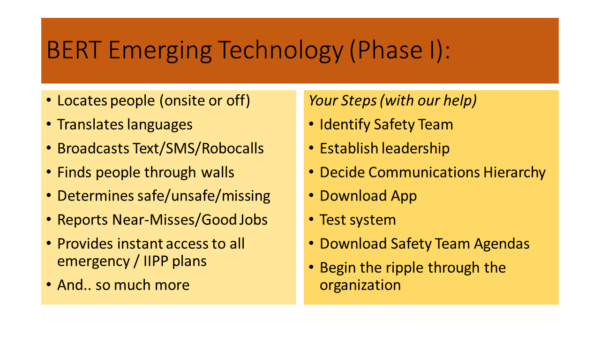
[BILL CUNNINGHAM] Sure, sure.
[TODD DEVOE] Really kind of cool. What is your reach right now?
[BILL CUNNINGHAM] Right now, well, we’re trained actually almost 50 businesses. There are one to two people from about 50 different businesses here in Southern California. They’re at all different levels of embrace, bringing in to their company and out. We’re actually getting a little more traction outside of southern California. I think we’re… one thing is we were focused upon in at Irvine — when they did an SWOT (Strength / Weaknesses / Opportunities / Threat analysis of what’s going on in their community. They found that we have a complacency here, you know? In Southern California, we’re in a pretty unusual situation with wonderful mutual aid, you know, things just happen. People don’t think about any kind of large scale emergency. So, outside of Southern California we’re having much more success than we are here, locally, at home.
[TODD DEVOE] I kind of see your app also being used for businesses that have large campuses, such as like, Google, or Toyota used to have here in Torrance, where there’s people all over the place, and there needs to be 24h contact with that. But I do see some really useful areas for your app. So, have you reached out to larger companies, like… I mean, I don’t want you to tell me exactly who you’re doing business with, but have you reached out to companies like Google, and stuff like that?
[BILL CUNNINGHAM] What we’re doing is, we’re right now in discussions with several companies. OSHA has a program called VPP, which is Voluntary Protection Program, and it’s for the largest of corporations. I mean, their industrial facilities. And we’re in discussion with several of them throughout the state of California, for doing just that. I’m not free to, as you said, to have that discussion. But that’s what we’re talking about. One is a large, to be generic enough, is a uniform delivery company. And one of their challenges is drivers at 2:00 in the morning is how do you get resources to them? So, we’re talking to them about that aspect. We’re working with some of the refineries, because they have issues with having iPhones or cell phones inside facilities, so we’re working with other vendors to be able to get secure devices so that things can be handled instantly inside a refinery.
In that world, there’s a thing called a near-mess, that’s very critical. Near-messes can be documented instantly. So, that’s our focus. Large industrial companies actually is our focus right now, here in the state of California.
[TODD DEVOE] Do you see an access, with your BERT program, into, say, schools and universities?
[BILL CUNNINGHAM] I think probably. What we’re finding, so far, is an access to the private schools and universities. Part of the issue is budgeting, but the other is, the public schools have, the teachers and the staff have a fair amount of management training. The Titan app more or less rolls right in very seamlessly to them, and so, that works very well. As a matter of fact, we’re working with a local school district right here, right now. Actually, my BERT is working right now at my daughter’s high school, and we’re rolling it out. So, that works as well. The BERT aspect, which is the training aspect to it, more works for companies and corporations, because you have… in a school, you have pretty much a kind of a standard. Everybody has got a certain level of training and understanding in management of people, whereas with businesses it’s all over the place. Our access, we believe, it’s more going to be industrial business, chambers of commerce, bringing all their businesses together, etc.
[TODD DEVOE] Is there a violent person or active shooter type of response for your app as well? Or is that something outside of that?
[BILL CUNNINGHAM] We have a pretty comprehensive action of the Titan app that does have active shooter in it. We talked pretty quickly about… well, there’s an app where you can lock down a facility, for sure. You can just hit a button and lock down your entire facility. So, that works. But the training aspect is understanding the mindset of an active shooter. And then, we encourage virtually everyone, and I’ll suggest this to… I’ll even go out on a limb and suggest it to your listeners and the readers of this, to search online for something totally outside of ours, is called “Run, Hide, Fight”, and I would say, look for that video. If you have any concern whatsoever about active shooter, for yourself or your family, look for that video and watch it. It is probably one of the most powerful things I’ve ever seen, it’s part of the Department of Homeland Security. It’s English and Spanish, and other languages. It’s a super powerful thing. And that is the buzz word of the day, is active shooter. That will help. We get into more the mindset, so then the preparation, a company can understand why the active shooter might find their place appealing, and then they can start thinking about why… not to do that. What can they do?
[TODD DEVOE] Let’s take a quick break here, and we’ll come right back after we hear a word from our sponsors. And welcome back from that break. Thank you so much for listening, and again, I’m here with Bill Cunningham, and we’re talking about his program and his app, the BERT, the Business Emergency Recovery Training, and the app that goes along with that, with keeping your businesses, and the businesses within your community prepared for any kind of emergency. And also, a great communications tool so people can reach out, in that time of crisis, to get the proper authorities and help that they need at that place of the crisis. So Bill, just kind of going back to what we were talking about the break. So, with the active shooter thing going on, this app has the ability to… with a one-push button. How does that work? Does it contact the authorities within the business, or does it contact… it doesn’t have to be the active shooter, but anything as far as that goes. Does that one-button push, does it contact the people in the business, or does that go right to 911, what exactly does that portion of the app do for you?
[BILL CUNNINGHAM] Wow, that is a phenomenally great question, and I really appreciate that. This app, and our training, in no way replaces any aspect whatsoever on 911. So, if anyone finds themselves in any kind of situation, and they need to dial 911, if they ever have a thought: “should I do the app first or 991 first?” 911 first, all the time. I can’t stress that enough. This is not a replacement in any way for 911.
So then, to get to your question, the idea is to get… the whole concept of BERT is take care of ourselves until first responders arrive. And sometimes, that arrival could be minutes – if it’s a large-scale emergency, it could be an extended period. If you’ve got a large campus, they could be bouncing around, trying to find out what’s going on. So, the idea is until first responders arrive, how do we take care of ourselves? How do we react to situations? So, that’s the main aspect. First responders are… if the company has, we do have companies that have BERT, and have the app, first responders are welcome to, we will gladly give them access. A company could give them access to it, so they can be notified and know in detail what is going on real time. We find that perhaps it doesn’t necessarily work as well, because there could be a minor thing, you know, it doesn’t rise to level, it could be just a cut or something that somebody is going to go to urgent care. So, the managers can make the decision.
If one sends an alert, it typically goes to their management, and whoever their safety management is — their senior management. They can make the instant decision of: has it reached the level of dialing 911? And then they would do it themselves. Or is it something we can handle internally?
Or, is 911 overwhelmed? You know, any kind of large scale situation, reaching 911. There’s no magic list. But if there’s a large-scale emergency, you know, if you were to think about where 911, the first responders, where they’re going to respond. If you think about a list and you put businesses on that list, in our thought, every single other entity is going to be above us. Schools, and hospitals, and nursing homes, and facilities and government agencies. And no matter what you keep adding, businesses just keep moving down to the bottom. And the reason is, it makes sense. Businesses are typically adults, they can take care of themselves — they can work together. Whereas virtually everyone else has a wider scope when they’re dealing with other people in camp.
The concept is, if BERT is needed, if the training is needed, you can get to 911. That’s where the key is. But there is no replacement whatsoever to it.
Now, back all the way to your question about the lockdown, there is a button inside the app with a lockdown. And it’s intended to be a, through training, a super last resort. I am literally on a lockdown, this is not a situation, I see somebody with an AK-47 or something, and you hit that button and it goes 3, 2, 1, boom! And every single person in your circle gets a notice that this facility is on lockdown.
[TODD DEVOE] That’s great, actually.
[BILL CUNNINGHAM] The manager will then take over communicating. Right, right.
[TODD DEVOE] I mean, that takes that delay on that decision of whether we’re going to lock down or not away. Because if a guy who is on the factory floor can push that button and say: yep, I see somebody dangerous, I’m going to push the lockdown down on it, and everybody is alerted on that, that’s great. Because I mean, sometimes, the first time we’re going to hear anything about it is when we hear that gunshot.
[BILL CUNNINGHAM] Exactly.
[TODD DEVOE] Yeah. And you know, I mean, one of the things, and I don’t know how it is for that particular business. But I’m telling people out there right now, that if you guys have that ability to do that, that’s powerful. And two, if somebody does it by mistake; and when I say mistake, they saw something and they thought it was it, you got to make sure that they don’t get in trouble for that, because you don’t want to take that power away from them.
[BILL CUNNINGHAM] Exactly. Exactly.
[TODD DEVOE] Man, that’s some good stuff right there.
[BILL CUNNINGHAM] Let me just speak one more point, and that is, there is… to keep a prankster away, it is not anonymous. So, if somebody hits that button, you know the person who did it, and exactly where they’re standing in your facility.
[TODD DEVOE] That’s great, yeah.
[BILL CUNNINGHAM] So, it’s not… there’s always… I always get the push back. “Oh, we just have somebody who wants to pull a prank?” Fine, you will know who it is! It’s not like when we were in high school and the kids would walk by and pull the fire alarm, and then run. You know?
[TODD DEVOE] What’s the difference between somebody went and say, took a community emergency response training out in their community, and then somebody who is taking a BERT training inside the business? Is there a focus difference?
[BILL CUNNINGHAM] Absolutely. There’s a lot of similarity between the two. The FEMA program is excellent, we use a lot of the slides, we use a lot of the verbiage, we use a lot of the training. However, the focus with CERT is to take the lead person inside your community, in your cul-de-sac, take care of your people that are inside your cul-de-sac. Do you have enough water? Is there a neighbor next door, an elderly neighbor? These are all phenomenally wonderful type things. BERT moves into the business world because a business is unable to take a certain number of people and take them away from the business for 30-some hours of training off-site. And then, at the end, have just kind of a core amount of training.
BERT takes all the training, and then implements it to a – we call it compliance book, where you’re actually filling out questions and building an emergency action plan, section by section, throughout the book. So, at the end, you have all of the elements for your business on exactly how you’re going to handle an emergency. You’re going to know who the safety team is. Who is the company’s emergency manager. Or the team leader that’s going to keep track of the scope of the incident? Or the medical team leader. You’re going to know, when you get through the training, you’re going to know every single thing that’s happening, and you’re going to be able to bring it back to your safety committee to tweak it, and: “ok, let’s implement this inside the company.” So, it gives a full workbook of how to implement these things inside your safety team and inside your company.
[TODD DEVOE] That’s great. I mean, when you have a takeaway like that, and that’s something that a lot of businesses struggle with, you know? Sometimes, they hire business consultants to come and write an emergency action plan or an emergency response plan, and it’s a spoiled plate and it doesn’t really fit that company. This way, you’re building the stuff from the ground up that fits that company. That’s some really cool stuff there.
[BILL CUNNINGHAM] I appreciate that. One of the things that we often say is: how many binders are on the shelf behind the safety manager? You know.
[TODD DEVOE] So true! So true.
[TODD DEVOE] All right. Well, speaking of binders, I’ll kind of switch questions around here for a little bit. And one of the things that I like to do for all my guests, those of you who have been listening to this podcast for a while will get this question coming up. So, what book do you recommend to somebody who wants to be involved in something like BERT, or emergency response, or emergency management, for their business?

[BILL CUNNINGHAM] There’s a couple of things, you know, there’s one book that I want to get to, but there’s a couple of other things that I’m going to encourage. One is, there’s… the American Red Cross has done some amazing studies of where America is in readiness for any kind of disaster. Where the country is, and where each municipality is. And it’s pretty sobering as to where things are. The American Red Cross Preparedness Survey in 2006 stated that only one in ten American households had taken the appropriate preparedness steps: emergency plan, emergency supply kit, and training in first aid and CPR. Those kinds of facts from these kinds of articles, that preparedness survey from the aftershock of Katrina, you study any of these documents and learn about the actual preparedness of our communities, and it’s easy to see where we need, where we must, step up. And we can’t count on our first responders. And I’m not saying it from a negative perspective. Is that they are going to be taxed, that the ratio of first responders to our people are just, it’s astronomical. And so, we have to rely on ourselves to step up and take care of ourselves and others inside our businesses, and to recover as quickly as possible.
But I’m going to say, the book that I come back to all the time, is The Servant Leader. I mean, Servant Leadership. There’s actually several different versions of the book. And what I found inside there, is there’s a whole discussion about how people react to situations. And what I love about the BERT training — and I’m very passionate about it, you can hear it in my voice, and my family and friends, everyone knows – they call be me Bert. Is that there’s a need to understand where people are, and how can you meet them where they are and guide them to where you think they need to be. And that’s what’s so important in the BERT training. Is how do you handle a room full of people who are panicking? How do you guide them where you need to be? And if you’ve got that mindset that comes out of that Servant Leader and Servant Leadership, you can instantly react to how people are looking at you and how they’re reacting. Because you can see exactly where they’re coming from. So, that’s one that I just think is an immensely powerful one that I re-read, I have notes and tabs, and when I’m sitting on hold, waiting for someone, I’ll just pick it up and just look at a section and kind of reinforce.
[TODD DEVOE] Books like that, that’s exactly what we’re looking for. Those that you re-read, and those are the ones you’re going to give to somebody someday if you have a new employee who is getting to leadership. Thank you so much for that. Hey Bill, so before we let you go, how do we get in touch with you? And if somebody wants to implement the BERT program in their business, how can they find you?
[BILL CUNNINGHAM] Let me mention one other thing, and then I’ll answer your question.
[TODD DEVOE] Oh sure, go ahead.
[BILL CUNNINGHAM] And that is, from our servant leadership and our focus on moving the BERT training out, is that we believe it’s important that every family member of every person who is trained, has this training. And so, we offer it for free to all of their family members.
[TODD DEVOE] Wow, that’s great.
[BILL CUNNINGHAM] So, a person who goes to the training and says, you know: “If I’m going to be at work, what’s going to happen? I can’t get home!” They know their families are taken care of, that just relieves one aspect of it. And so, that’s our push out to the families, and that happens! We actually get that, people re-taking the course again and again. And so, to shout out to us, the website is www.BERTinc.org . And our telephone number is 714-838-2923, we’re here in Southern California, and you can reach me at [email protected].
[TODD DEVOE] Well, Bill, thank you so much. And for everybody, if you guys didn’t write that down, I’ll definitely put that information down in our show notes at the bottom of the podcast here. And again, Bill, thank you so much for being here. Thank you for taking your time. I really look forward to seeing the BERT program grow, and I’d like to have you back on sometime, to see your progression.
[BILL CUNNINGHAM] Well, thanks much, Todd, and you’re doing great work over there as well, at EM Weekly.
[TODD DEVOE] Thank you very much.
[BILL CUNNINGHAM] Thank you.


